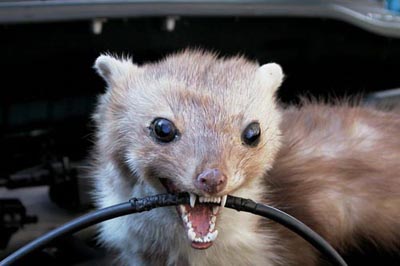
Her portraiture, for its extensive use of Afro-Caribbean religious symbols, has been viewed as a protest against the marginalization or folklorization of Afro-Cuban traditions, done through the artist's exploration of her own identity in depictions of her literally embodied experiences of race, gender, and ethnicity. Pérez Bravo's work has immense personal meaning, reflecting as it does her life and beliefs, but has also been interpreted as having a broader significance. Her practice of Santeria, which emphasizes duality, allows for the existence of this contextualized violence and spirituality in the same image, while also transforming Pérez Bravo’s body into a sacred site in and of itself. One method she uses to accomplish this is to depict her body in circumstances of physical violence.
Marta animal en mexico series#
These series attempt to demystify motherhood by showing her body in ways that are intended to challenge the worshiping of sensual beauty. Her challenges in childbirth served as the inspiration for her series Para concebir ( To conceive) (1985) and Memories of Our Baby (1990). įor example, a large part of her work also consists of self-portraits that are intended to "demystify" motherhood. Her photos are often grounded in her own lived experiences of worship and womanhood, especially the expression of maternity, desire and death, which she expresses through manipulation and presentation of her physical body.

There is an emphasis on the exploration and performance of both spiritual and physical power in Pérez Bravo’s self-portraiture, which together “remythify” the female body and notions of femininity. This is done primarily by her transformation of her own body alternatively into an altar or an offering, or a vehicle for sacred meaning. Although her spiritual path itself remains vague, we are given a glimpse into her divine experiences. Her photographs attempt to express her own spiritual path, documenting her progress through abstract and dream-like staged photographs. This is why Pérez Bravo chooses such familiar objects such as rope, branches, and animal parts to express the divine nature of all things. These objects are often "votive offerings and other elements of popular lore" of her Cuban culture. The Santería believe that the divine exists in all things, even in everyday objects.

She is deeply connected to her cultural background, especially the religious belief of the Afro-Caribbean Santería. Pérez Bravo's work is usually staged, small-format black-and-white photographs where she uses her body as a vessel to express her cultural and religious perspective.

Pérez Bravo was part of a generation of Cuban artists born immediately following the Cuban Revolution, and was one of those who went into exile following the collapse of the Special Period at the end of the 1980s. She lived in Havana until 1995 when she moved to Monterrey, Mexico, with her family, where she currently resides and works. Although she studied painting while at the Instituto Superior de Arte, she became interested in photography while working on her senior thesis at the latter, and has primarily used this medium since. Pérez Bravo initially studied painting in Havana at the San Alejandro Academy of Fine Arts (1979) and the Instituto Superior de Arte (1984). Much of her art is informed by this practice, and engages with the themes of ritual, motherhood and femininity, expressed through the highly stylized posing of her body, which is placed in relation to personally and ritually significant objects in her self-portraits. Marta María Pérez Bravo (born 1959) is a Cuban artist who is best known for her black-and-white self-portraiture, in which she often uses her own body as the central subject-object to express her own belief in,and practice of, Afro-Cuban religions, particularly Santeria and Palo Monte.


 0 kommentar(er)
0 kommentar(er)
